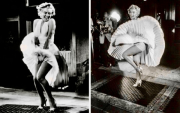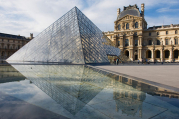Adolph (Baron) de Meyer
 ruguru — 16.09.2011
Немного из совсем старого. Это, кстати, первый официальный фотограф
журнала Vogue. Начал работать там в 1913 году. Большая часть его
работ, увы, не сохранилась, была утеряна во время Второй Мировой.
Официального сайта нет, конечно.
ruguru — 16.09.2011
Немного из совсем старого. Это, кстати, первый официальный фотограф
журнала Vogue. Начал работать там в 1913 году. Большая часть его
работ, увы, не сохранилась, была утеряна во время Второй Мировой.
Официального сайта нет, конечно.Кто скучал по наличию талии у моделей - загляните. 8)










Это Клод Моне, кстати.


Это жена фотографа баронесса Ольга де Мейер. Фотография 1902 года. Кто там скучал по женским талиям? 8)












Нижинский, 1911 год

Неизвестная балерина из труппы русского балета.

Опять жена, баронесса Ольга де Мейер в 1905 году.

Реклама духов Elizabeth Arden, 1926
Adolph (Baron) de Meyer (1 September 1868 - 6 January 1949) was a photographer famed for his elegant photographic portraits in the early 20th century, many of which depicted celebrities such as Mary Pickford, Rita Lydig, Luisa Casati, Billie Burke, Irene Castle, John Barrymore, Lillian Gish, Ruth St. Denis, King George V of the United Kingdom, and Queen Mary. He was also the first official fashion photographer for American magazine Vogue, appointed to that position in 1913.
Reportedly born in Paris and educated in Dresden, Adolph de Meyer was the son of a German Jewish father and Scottish mother. In 1893 he joined the Royal Photographic Society and moved to London in 1895. He used the surnames Meyer, von Meyer, de Meyer, de Meyer-Watson, and Meyer-Watson at various times in his life. From 1897 he was known as Baron Adolph Edward Sigismond de Meyer, though some contemporary sources list him as Baron Adolph von Meyer and Baron Adolph de Meyer-Watson.
On 25 July 1899, at Holy Trinity Church, Sloane Street, Cadogan Square, in London, England, de Meyer married Donna Olga Caracciolo, an Italian noblewoman who had been divorced earlier that year from Nobile Marino Brancaccio; she was a goddaughter of Edward VII. The couple reportedly met in 1897, at the home of a member of the Sassoon banking family, and Olga would be the subject of many of her husband's photographs.
The de Meyers' marriage was one of marriage of convenience rather than romantic love, since the groom was homosexual and the bride was bisexual or lesbian. As Baron de Meyer wrote in an unpublished autobiographical novel, before they wed, he explained to Olga "the real meaning of love shorn of any kind of sensuality". He continued by observing, "Marriage based too much on love and unrestrained passion has rarely a chance to be lasting, whilst perfect understanding and companionship, on the contrary, generally make the most durable union." After the death of his wife in 1930, Baron de Meyer became romantically involved with a young German, Ernest Frohlich whom he hired as his chauffeur and later adopted as his son. The latter went by the name Baron Ernest Frohlich de Meyer.
From 1898 to 1913 de Meyer lived in fashionable Cadogan Gardens, London, and between 1903 and 1907 his work was published in Alfred Stieglitz's quarterly Camera Work. Cecil Beaton dubbed him "the Debussy of photography". In 1912 he photographed Nijinsky in Paris. On the outbreak of World War I, the de Meyers, who in 1916 took the new names of Mahrah and Gayne, on the advice of an astrologer, moved to New York City, where he became a photographer for Vogue from 1913–21, and for Vanity Fair. In 1922 de Meyer accepted an offer to become the Harper's Bazaar chief photographer in Paris, spending the next 16 years there.
On the eve of World War II in 1939, de Meyer returned to the United States, and found that he was a relic in the face of the rising modernism of his art. He died in Los Angeles in 1949, his death being registered as 'Gayne Adolphus Demeyer, writer (retired)'. Today, few of his prints survive, most having been destroyed during World War II.
|
|
</> |

 Особенности регистрации товарного знака в Краснодаре: что нужно знать местным предпринимателям
Особенности регистрации товарного знака в Краснодаре: что нужно знать местным предпринимателям  чашечный бум аромат востока
чашечный бум аромат востока  Любителям что-то там обсуждать в интернете с братским народом.
Любителям что-то там обсуждать в интернете с братским народом.  Жарьте котлеты или увольняйтесь!
Жарьте котлеты или увольняйтесь!  Юра, купи хлеба!
Юра, купи хлеба!  Утреннее
Утреннее  Запретительская чешижопица
Запретительская чешижопица  "Народная" блокадная пушка "Ленинградка" калибра 45 мм
"Народная" блокадная пушка "Ленинградка" калибра 45 мм  По дорога бывшей Восточной Пруссии.
По дорога бывшей Восточной Пруссии. 



